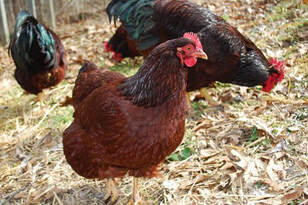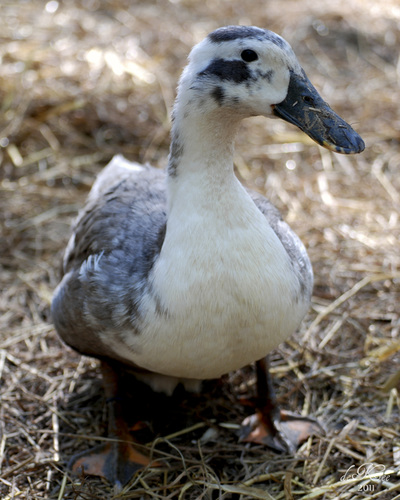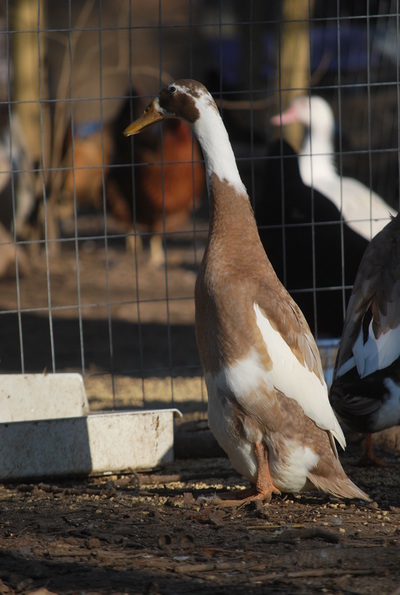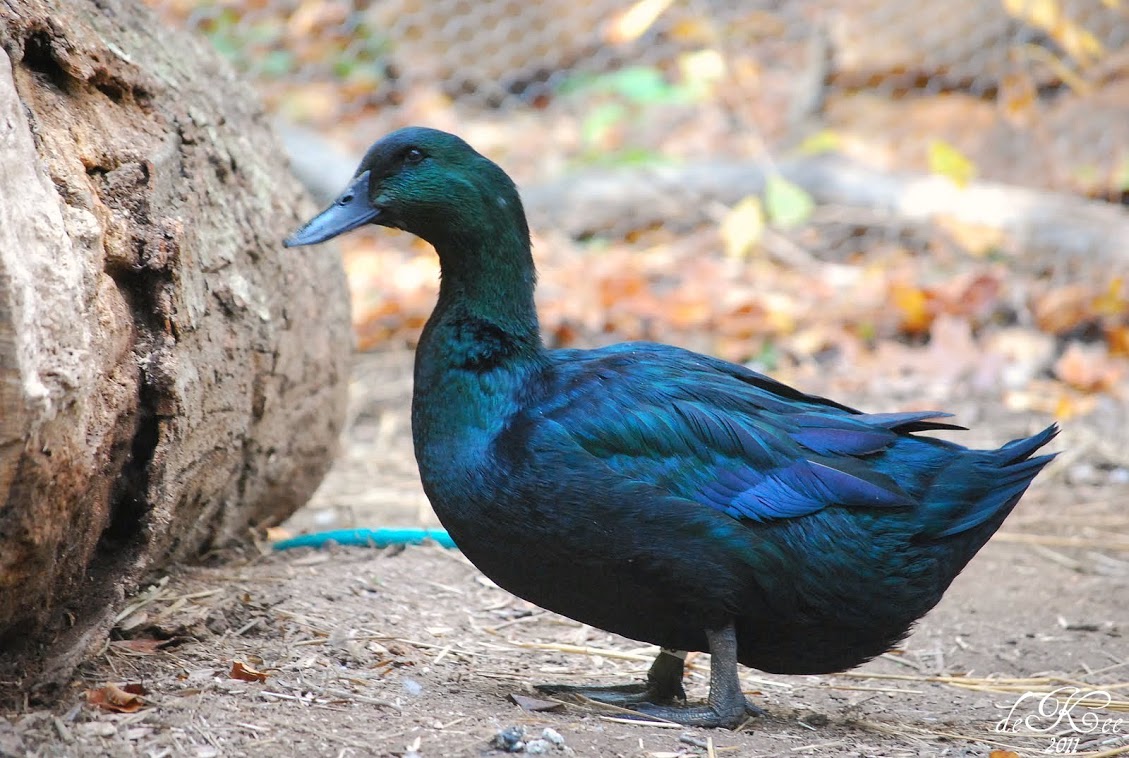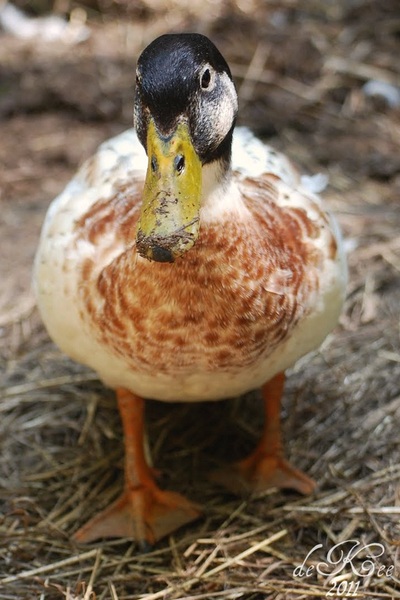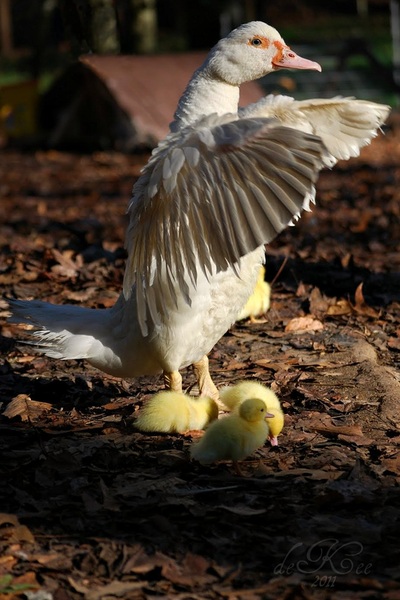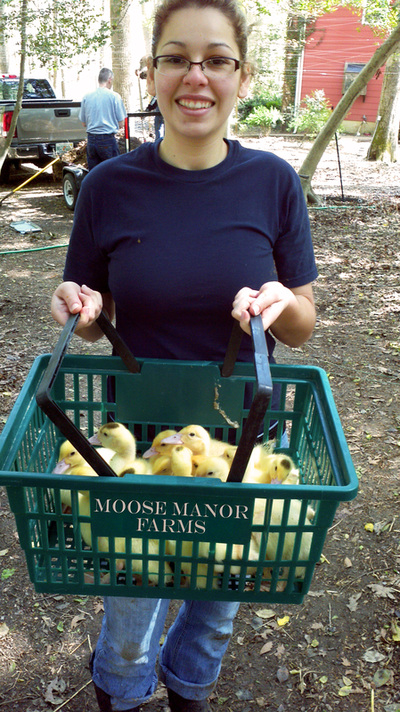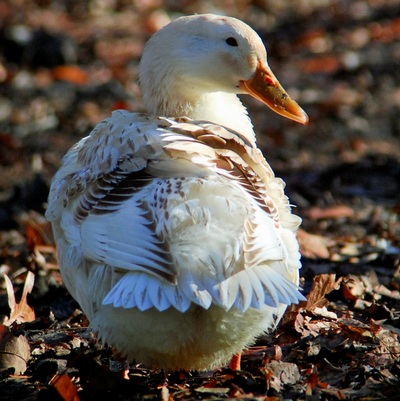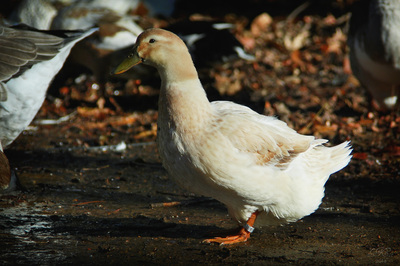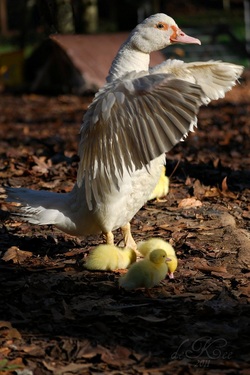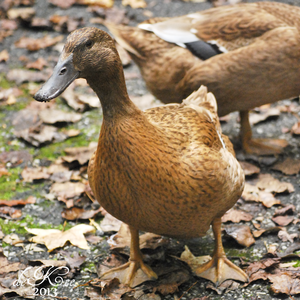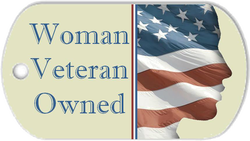Livestock For Sale |
|
Adults | Chickens | Ducklings | Goslings | Guinea Fowl | Meat Makers | Lambs | Order Form
All birds sold for pick up by appointment here on the farm in Accokeek, MD and babies as straight-run only as I cannot guarantee sexing (unless they're auto-sexing). Unless otherwise indicated, all birds are large fowl only.
Baby chicks, ducklings, and hatching eggs are available from about April through July. Current availability varies with hatch timelines and rate of lay - I'm at the mercy of Mother Nature and mother ducks.
Baby chicks, ducklings, and hatching eggs are available from about April through July. Current availability varies with hatch timelines and rate of lay - I'm at the mercy of Mother Nature and mother ducks.
For questions not answered on this page please contact me via email or text/phone here:
NPIP 51-582
.
Lavender English Orpington Chicks $12 ea.

SOLD OUT FOR 2024
Hatching every 2 weeks from April through July.
Originating in England, Orpingtons are a large, stately chicken with a docile and happy disposition. They’re a large, heavy bird weighing from 7 – 10 lbs with lots of fluffy plumage giving them an even larger appearance (and pretty little petty-coats). They thrive and produce very well in cold or hot weather and are very friendly and tractable. Broodiness is also a well known trait with the Orpington, and they make excellent setters and mothers of all poultry species. I often have mine hatch and grow out baby ducks.
Orpingtons are one of the go-to dual-purpose chickens for eggs and meat. Orps lay about 200 medium sized light-brown eggs each year. Additionally, they’re white skinned, plump, and juicy with males dressing out at 5+lbs in 20 weeks (right when they start to croak-crow)
Our Orps come from the quality stock of breeders we know well. They have excellent type and feathering… we don’t keep any hatchery birds in our breeding program! This hardy, beautiful, sweet chicken is a great addition to any family backyard or homestead operation!
Hatching every 2 weeks from April through July.
Originating in England, Orpingtons are a large, stately chicken with a docile and happy disposition. They’re a large, heavy bird weighing from 7 – 10 lbs with lots of fluffy plumage giving them an even larger appearance (and pretty little petty-coats). They thrive and produce very well in cold or hot weather and are very friendly and tractable. Broodiness is also a well known trait with the Orpington, and they make excellent setters and mothers of all poultry species. I often have mine hatch and grow out baby ducks.
Orpingtons are one of the go-to dual-purpose chickens for eggs and meat. Orps lay about 200 medium sized light-brown eggs each year. Additionally, they’re white skinned, plump, and juicy with males dressing out at 5+lbs in 20 weeks (right when they start to croak-crow)
Our Orps come from the quality stock of breeders we know well. They have excellent type and feathering… we don’t keep any hatchery birds in our breeding program! This hardy, beautiful, sweet chicken is a great addition to any family backyard or homestead operation!
.
Light Sussex Chicks $12 ea.
Adult Breeding Stock available $60/pair
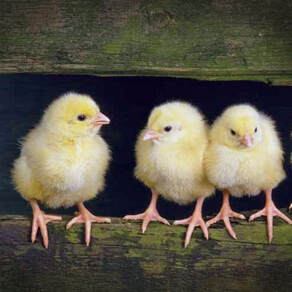
SOLD OUT FOR 2024
Hatching every 2 weeks from April through July.
Originating from Southeast England, Light Sussex is one of the oldest British chicken breeds. The Sussex was once the premiere meat chicken in their home county of Kent. Known for their winter laying, good foraging ability, docile nature, and rapid initial growth, the Sussex thrive and produce very well in cold or hot weather. They're very pretty birds, always busy, and very sweet. Broodiness is also a well known trait with the this breed, and they make excellent setters and mothers of all poultry species.
Light Sussex are one of the go-to dual-purpose chickens for eggs and meat. The hens lay about 200 medium sized pinkish eggs each year. Additionally, they’re white skinned, plump, and juicy with males dressing out at 5.5+lbs in 16 weeks dressing out for the table at about 4lbs.
Our Light Sussex come from the quality stock of breeders we know well. They have beautiful plumage… we don’t keep any hatchery birds in our breeding program! This hardy, beautiful, sweet chicken is a great addition to any family backyard or homestead operation!
Hatching every 2 weeks from April through July.
Originating from Southeast England, Light Sussex is one of the oldest British chicken breeds. The Sussex was once the premiere meat chicken in their home county of Kent. Known for their winter laying, good foraging ability, docile nature, and rapid initial growth, the Sussex thrive and produce very well in cold or hot weather. They're very pretty birds, always busy, and very sweet. Broodiness is also a well known trait with the this breed, and they make excellent setters and mothers of all poultry species.
Light Sussex are one of the go-to dual-purpose chickens for eggs and meat. The hens lay about 200 medium sized pinkish eggs each year. Additionally, they’re white skinned, plump, and juicy with males dressing out at 5.5+lbs in 16 weeks dressing out for the table at about 4lbs.
Our Light Sussex come from the quality stock of breeders we know well. They have beautiful plumage… we don’t keep any hatchery birds in our breeding program! This hardy, beautiful, sweet chicken is a great addition to any family backyard or homestead operation!
|
Available in Fall: Sexed Pullets: $45
All birds sold for pick up here on the farm, straight-run only, minimum purchase 3 of any breed. |
.
French Black Copper Marans Chicks $12 ea.
Adult Breeding Stock available $60/pair
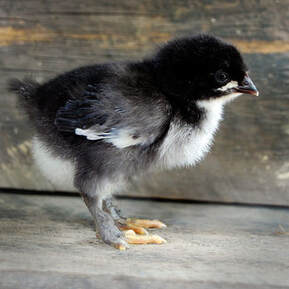
SOLD OUT FOR 2024
Hatching every 2 weeks from April through July.
Our Black Copper Marans (BCM) are quiet and gentle, hens are friendly and tractable but keep in mind that the roosters take their job as protector of their ladies pretty seriously. We breed the French standard, which is feather-legged. Roosters weigh in around 7-8 lbs and the hen around 6.5 lbs.
The Black Copper Marans was only recently recognized by the American Poultry Association in 2011. But well over 100 years ago, in south western France, they were the local chickens known as poule de Marans or 'swamp chickens' because the countryside is low and marshy. Over nearly a century the poule de Marans was improved by breeding in new genetics from Croad Langshan, Brahmas, Coucou de Malines, and others to create the predecessors of today's Marans breed.
Black Copper Marans are best known for their very deep chocolate- brown colored eggs. This color is deposited (almost painted) onto the shell right before the chicken lays it. Over the length of the laying season the hen will have a little less and less pigment for future eggs that year. So early in the season, after she's had a break, the hen will lay the darkest eggs and if your hen is a good layer you will get slightly lighter eggs going forward.
Hatching every 2 weeks from April through July.
Our Black Copper Marans (BCM) are quiet and gentle, hens are friendly and tractable but keep in mind that the roosters take their job as protector of their ladies pretty seriously. We breed the French standard, which is feather-legged. Roosters weigh in around 7-8 lbs and the hen around 6.5 lbs.
The Black Copper Marans was only recently recognized by the American Poultry Association in 2011. But well over 100 years ago, in south western France, they were the local chickens known as poule de Marans or 'swamp chickens' because the countryside is low and marshy. Over nearly a century the poule de Marans was improved by breeding in new genetics from Croad Langshan, Brahmas, Coucou de Malines, and others to create the predecessors of today's Marans breed.
Black Copper Marans are best known for their very deep chocolate- brown colored eggs. This color is deposited (almost painted) onto the shell right before the chicken lays it. Over the length of the laying season the hen will have a little less and less pigment for future eggs that year. So early in the season, after she's had a break, the hen will lay the darkest eggs and if your hen is a good layer you will get slightly lighter eggs going forward.
|
Marans hens are considered an average layer giving approximately 3 eggs per week, or 150-200 eggs per year. These ladies don't have a strong tendency toward broodiness but when they do take a notion to set a nest, they're good setters and mothers.
Available in Fall: Sexed Pullets: $45 All birds sold for pick up here on the farm, straight-run only, minimum purchase 3 of any breed. |
Rhode Island Red Chicks $12 ea.
Adult Hens available $40 ea.

SOLD OUT FOR 2024
Hatching every 2 weeks from April through July.
As the name suggests, this breed originated in Rhode Island. Here we breed the ‘Old-Type’ Rhode Island Reds which are larger, a deeper red, highly tractable dual-purpose bird with a single comb. The hens are active and gentle, the roosters take good care of their ladies and aren’t aggressive to humans.
The rich, reddish-black plumage and red comb of Rhode Island Red chickens brings to mind the classic image of the American yard bird. These birds are strikingly beautiful and are also excellent brown egg layers. In my opinion they’re the best layers of all the dual-purpose breeds… these ladies average 250 eggs annually. Additionally, they dress out at 4-5 lbs in 20 weeks and are excellent free-range feeders.
They’re an all-around great bird to have on a homestead of any size.
Hatching every 2 weeks from April through July.
As the name suggests, this breed originated in Rhode Island. Here we breed the ‘Old-Type’ Rhode Island Reds which are larger, a deeper red, highly tractable dual-purpose bird with a single comb. The hens are active and gentle, the roosters take good care of their ladies and aren’t aggressive to humans.
The rich, reddish-black plumage and red comb of Rhode Island Red chickens brings to mind the classic image of the American yard bird. These birds are strikingly beautiful and are also excellent brown egg layers. In my opinion they’re the best layers of all the dual-purpose breeds… these ladies average 250 eggs annually. Additionally, they dress out at 4-5 lbs in 20 weeks and are excellent free-range feeders.
They’re an all-around great bird to have on a homestead of any size.
Olive Egger Chicks $12 ea.
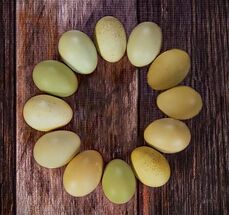
SOLD OUT FOR 2024
Hatching every 2 weeks from April through July.
Green Eggs and Ham! Our Olive Egger Chickens are quiet and docile, hens are friendly and curious. These are derived from large fowl and you can expect them to weigh in around 6 lbs. Roosters are calm and docile, but make good flock protectors. .
This hybrid is a wonderful egg layer beginning to lay between 5-7 months of age and producing an abundance of large olive eggs per year. There's is a lot of variety to the feather color of the birds and some amount of variety to the shades of green from light green to avocado.
Olive Egger hens are considered an average layer giving approximately 3-4 eggs per week, or 150-250 eggs per year. These ladies don't have a strong tendency toward broodiness but if they do commit to the nest they're fine brooders and mothers.
Hatching every 2 weeks from April through July.
Green Eggs and Ham! Our Olive Egger Chickens are quiet and docile, hens are friendly and curious. These are derived from large fowl and you can expect them to weigh in around 6 lbs. Roosters are calm and docile, but make good flock protectors. .
This hybrid is a wonderful egg layer beginning to lay between 5-7 months of age and producing an abundance of large olive eggs per year. There's is a lot of variety to the feather color of the birds and some amount of variety to the shades of green from light green to avocado.
Olive Egger hens are considered an average layer giving approximately 3-4 eggs per week, or 150-250 eggs per year. These ladies don't have a strong tendency toward broodiness but if they do commit to the nest they're fine brooders and mothers.
|
Available in Fall: Sexed Pullets: $45
All birds sold for pick up here on the farm, straight-run only, minimum purchase 3 of any breed. |
Cinnamon Queen Sex-link Layer Chicks $10 ea.
POL Hens available $40 ea.

SOLD OUT FOR 2024
Hatching every 2 weeks from April through July.
What’s a “sex-link” chicken? This means is that both the hens and roosters can be easily identified by their down color when they hatch. This assures we can provide you with just the female chicks.
Cinnamon Queens are suitable for a small urban yard or a rural barnyard. a remarkably friendly and affectionate chicken, are pretty quiet so they won’t disturb your neighbors and friendly enough to let the children handle them and cuddle them.
Hatching every 2 weeks from April through July.
What’s a “sex-link” chicken? This means is that both the hens and roosters can be easily identified by their down color when they hatch. This assures we can provide you with just the female chicks.
Cinnamon Queens are suitable for a small urban yard or a rural barnyard. a remarkably friendly and affectionate chicken, are pretty quiet so they won’t disturb your neighbors and friendly enough to let the children handle them and cuddle them.

Their color is best described as a light cinnamon brown– a bit of cream and golden color often leaks through the primary color. The hens are light-weight which makes for an excellent feed conversion.
These hard-working girls as they lay in excess of 300+ large brown eggs per year! These girls barely pause for the molt and get right back to it, making them one of the best breeds for egg laying around. At first, they’ll only lay at about 50% their average capacity. But, in no time at all, they’re at full production giving you 4-6 extra-large dark brown eggs a week that have excellent shell strength. Additionally, they mature early… beginning to lay between 17 – 20 weeks.
A very efficient and friendly bird suitable for any environment that gets eggs to table fast!
These hard-working girls as they lay in excess of 300+ large brown eggs per year! These girls barely pause for the molt and get right back to it, making them one of the best breeds for egg laying around. At first, they’ll only lay at about 50% their average capacity. But, in no time at all, they’re at full production giving you 4-6 extra-large dark brown eggs a week that have excellent shell strength. Additionally, they mature early… beginning to lay between 17 – 20 weeks.
A very efficient and friendly bird suitable for any environment that gets eggs to table fast!
|
. |
Transylvania Naked Neck Turken Chicks $10 ea.

SOLD OUT FOR 2024
Frizzle and Smooth available
Perhaps not the most elegant chickens on our farm, the Naked Neck is a wonderful breed known for some pretty remarkable traits. The birds have an appallingly fascinating appearance - virtually all the neck and crop area is featherless, just a rich red colored skin, some even have a little ascot of feathers. You might wonder why anyone would want these bizarre looking things running around their barnyard.
The genetic mutation that gives these birds their naked neck evolved in Romania hundreds of years ago but the breed has largely been developed in Germany. It’s proved to be dominant in breeding and, according to studies performed in France in 2006, it's been shown to increase breast size in birds while also improving egg size. In warm regions, the lower body temperature produced by this unique feather restricting DNA reduces heat stress which improves food conversion rates, and increases weight gain. Roosters are typically 6 lbs while the hens get to be around 5 lbs.
Naked Neck chickens are best known for their excellent foraging ability in either hot or cold weather, these birds are surprisingly cold hardy and pretty disease resistant. Within my own flock, these crazy chickens have no problem charging out into the snow to forage while all the other girls are in the henhouse complaining that they won't put their precious toes in the white stuff.
Frizzle and Smooth available
Perhaps not the most elegant chickens on our farm, the Naked Neck is a wonderful breed known for some pretty remarkable traits. The birds have an appallingly fascinating appearance - virtually all the neck and crop area is featherless, just a rich red colored skin, some even have a little ascot of feathers. You might wonder why anyone would want these bizarre looking things running around their barnyard.
The genetic mutation that gives these birds their naked neck evolved in Romania hundreds of years ago but the breed has largely been developed in Germany. It’s proved to be dominant in breeding and, according to studies performed in France in 2006, it's been shown to increase breast size in birds while also improving egg size. In warm regions, the lower body temperature produced by this unique feather restricting DNA reduces heat stress which improves food conversion rates, and increases weight gain. Roosters are typically 6 lbs while the hens get to be around 5 lbs.
Naked Neck chickens are best known for their excellent foraging ability in either hot or cold weather, these birds are surprisingly cold hardy and pretty disease resistant. Within my own flock, these crazy chickens have no problem charging out into the snow to forage while all the other girls are in the henhouse complaining that they won't put their precious toes in the white stuff.
|
Naked Necks are an excellent dual-purpose bird that is a year round layer of large sized brown eggs averaging 200 each year. They also have excellent meat quality; in France this breed is often regarded as the premier eating bird due to the exceptional meat texture and thin skin which crisps to perfection when roasted. Naked Necks have about 40% fewer feathers than breeds of a similar size which makes them much easier to dress. This uncommon, amazingly hardy chicken is a great addition to any backyard or homestead operation! Available in Fall: Sexed Pullets: $25 All birds sold for pick up here on the farm, straight-run only, minimum purchase 3 of any breed. |
|
.
Ancona Duckling Assortment $12 ea.

SOLD OUT FOR 2024
Hatching every 2 weeks from April through July.
Available in Fall: Sexed Pullets: $45
Unique, beautiful, and calm tempered, Ancona are a wonderful dual purpose breed that forages better and has superior laying ability to many other dual-purpose breeds. The Ancona is a hardy and adaptable duck well suited for rugged or heavily wooded property. With their individual color patterns, friendly personalities, and laid-back social hierarchy, they are a great addition to any farm.
Excellent year-round layers of about 260 white or blue eggs averaging 2.8 oz each. Each of my breeding pens has a drake that carries the blue or green egg gene and several females laying colored eggs.
The Ancona is listed in a "critical" status by the American Livestock Breeds Conservancy. Learn more about the Ancona breed here.
Our Ancona's are sold as an assortment only (as we cannot guarantee which colors will hatch when you're next in the queue) and may include any of the following colors: Silver, Blue, Black, Chocolate, or Tricolor. This year we'll have a small amount of sex-linked available... watch the newsletter for availability.
All birds sold for pick up here on the farm, straight-run only, minimum purchase 3 of any breed.
Hatching every 2 weeks from April through July.
Available in Fall: Sexed Pullets: $45
Unique, beautiful, and calm tempered, Ancona are a wonderful dual purpose breed that forages better and has superior laying ability to many other dual-purpose breeds. The Ancona is a hardy and adaptable duck well suited for rugged or heavily wooded property. With their individual color patterns, friendly personalities, and laid-back social hierarchy, they are a great addition to any farm.
Excellent year-round layers of about 260 white or blue eggs averaging 2.8 oz each. Each of my breeding pens has a drake that carries the blue or green egg gene and several females laying colored eggs.
The Ancona is listed in a "critical" status by the American Livestock Breeds Conservancy. Learn more about the Ancona breed here.
Our Ancona's are sold as an assortment only (as we cannot guarantee which colors will hatch when you're next in the queue) and may include any of the following colors: Silver, Blue, Black, Chocolate, or Tricolor. This year we'll have a small amount of sex-linked available... watch the newsletter for availability.
All birds sold for pick up here on the farm, straight-run only, minimum purchase 3 of any breed.
.
Indian Runner Duckling Assortment $12 ea.
SOLD OUT FOR 2024
Hatching every 2 weeks from April through July.
Available in Fall: Sexed Pullets: $45
See a video of past years babies enjoying a watermelon snack.
Silly clown ducks with funny little personalities. Raised primarily as ornamentals, they're also good layers. Runners are only second to Dutch Hookbills as the hands-down best foragers of all domestic ducks; they'll keep a garden clear of slugs for sure! Rather high strung, they don't have any desire to brood their own eggs but they'll most certainly produce tons of offspring if you 're able to find an alternative way to hatch the eggs.
Very good layers of about 220 white or blue eggs averaging 2.8 oz each.
Our Indian Runner's are sold as an assortment only (as we cannot guarantee which colors will hatch when you're next in the queue) and may include any of the following colors: White, Black, Chocolate, Standard Penciled, Emery Penciled, or Saxony. This year we'll have a small amount of sex-linked available... watch the newsletter for availability.
The Indian Runner is listed in a "watch" status by the American Livestock Breeds Conservancy. Learn more about the Indian Runner breed here.
|
Available in Fall: Sexed Pullets: $45
All birds sold for pick up here on the farm, straight-run only, minimum purchase 3 of any breed. |
Black Cayuga Ducklings $12 ea. (Holderread Top Show Quality line)
|
SOLD OUT FOR 2024
Hatching every 2 weeks from April through July. Available in Fall: Sexed Pullets: $45 The Cayuga is a medium-class, very robust breed that is known for it's beautiful black plumage that shines iridescent green in the sun and reflects back purple in the shade. They have a jet black bill with occasional olive tips and the feet and legs are solid black (never orange). Weighing an average 8 pounds for mature males and 7 pounds for females, this is a nice sized waddler with a deep, grunting quack. Additionally, the eggs start the season black as coal with a deep green shell. As the season runs on, the "paint bucket" runs out of black and you have a beautiful, extra large, dusky green egg. |
|
The Cayuga is a good seasonal layer, producing 100-150 eggs January thru November.
The breed started out as a commercial roasting bird but lost favor in the market when the Pekin took over. The meat of the Cayuga is of excellent taste and fine quality, but its black pin feathers on white skin don't leave as clean a carcass as white feathered birds. Though it's harder to process than light feathered ducks, the meat is high quality with an intense beefy flavor. The breast is a bit smaller than many standard meat ducks but it has a succulent deep red meat with a wonderful complex flavor. I'll fight you for the thighs though! The Cayuga duck is listed as “Threatened” on the American Livestock Breeds Conservancy’s Conservation Priority List. Learn more about the Cayuga breed here. |
Welsh Harlequin Ducklings $12 ea.

LIMITED SUPPLY FOR 2024
Hatching every 2 weeks from April through July.
Available in Fall: Sexed Pullets: $45
The Welsh Harlequin is rather rare in the United States, very stylish, a winner at exhibitions, a layer of more eggs that you can eat, a producer of lean meat, an excellent setter and mother, and a calm, quiet addition to your backyard.
This breed has egg yields greater than the much revered Khaki Campbell but are far calmer to manage. Laying ability depends nearly as much on environment and management as it does on genetics, but Harlequins should yield an annual production of 275-350 excellently flavored, large to extra-large white eggs weighing 2.8 oz. on average. In my experience, the hens will lay every day like clockwork.
Available in Fall: Sexed Pullets: $45
Hatching every 2 weeks from April through July.
Available in Fall: Sexed Pullets: $45
The Welsh Harlequin is rather rare in the United States, very stylish, a winner at exhibitions, a layer of more eggs that you can eat, a producer of lean meat, an excellent setter and mother, and a calm, quiet addition to your backyard.
This breed has egg yields greater than the much revered Khaki Campbell but are far calmer to manage. Laying ability depends nearly as much on environment and management as it does on genetics, but Harlequins should yield an annual production of 275-350 excellently flavored, large to extra-large white eggs weighing 2.8 oz. on average. In my experience, the hens will lay every day like clockwork.
Available in Fall: Sexed Pullets: $45
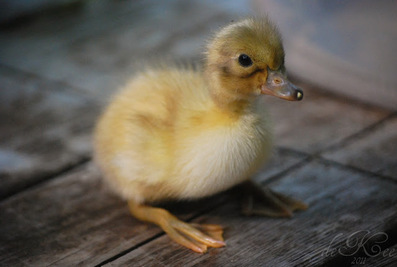
This duck is listed as critical by the American Livestock Conservancy. There is an urgent need for more conservation breeders of Harlequins. Learn more about the Welsh Harlequin breed here.
All birds sold for pick up here on the farm, straight-run only, minimum purchase 3 of any breed.
All birds sold for pick up here on the farm, straight-run only, minimum purchase 3 of any breed.
.
White French Production Muscovy Ducklings $12 ea.
LIMITED SUPPLY FOR 2024
These are hatched by the mama to increase the hatch rate
we will update this section as necessary
Available in Fall: Sexed Pullets: $45
An absolute favorite here, the Muscovy is not really a duck but a large perching waterfowl - a distinct and separate species from other domestic ducks. With some goose-like qualities, some duck-like qualities and a bit of chicken behavior mixed in they're truly a unique variety to keep. Nearly silent (no quacking, honking, or clucking), they're the perfect backyard pet-poultry.
This strain of Muscovy babies grow fast! Drakes will reach 12 lbs in 12 weeks. And speaking of fast, these are the fastest little baby waterfowl you've ever seen! Just picture how busy, playful baby chickens hop and run and whiz around then add even more speed and an amazing jumping ability - I swear they have springs in their legs! They love to climb blocks of wood and stones and are as swift and sure footed as little billy-goats with their perfect tree-duck claws. A lot of fun to watch, but keep a screen on top of the brooder or you'll be chasing them around.
Muscovy have a very calm temperament and are often described as "friendly as a puppy." I call them my 'zen ducks', they're just so laid back. This strain of Muscovy is very curious and friendly, will often greet you in the barnyard by "talking" to you while they wag their tails. Many of the girls will allow me to pet them or give them a little

scratch along their necks and the boys are really big flirts and love getting attention. When I call their name they smooth their Elvis hair crest and bat their eyes at me. Very sweet. They do love their treats... I typically feed them liver bits or other pieces of meat along with lots of greens.
Muscovy love to eat all the things you don't want lurking in your barnyard: ticks, flies, mosquitoes, mosquito larva, slugs, spiders, mice, snakes... they'll pretty much eat anything that doesn't eat them first! During summer, in the early evening you can see them craning their necks up and gobbling mosquitoes right out of the air.
All birds sold for pick up here on the farm, straight-run only, minimum purchase 3. I recommend brooding and growing out your Muscovy ducklings separately of the mallard types (with goslings is ok) so they grow knowing they're a distinct species - this will keep them from breeding with your other ducks when they're adults. Although, they'll remain friendly and are not at all aggressive.
Muscovy love to eat all the things you don't want lurking in your barnyard: ticks, flies, mosquitoes, mosquito larva, slugs, spiders, mice, snakes... they'll pretty much eat anything that doesn't eat them first! During summer, in the early evening you can see them craning their necks up and gobbling mosquitoes right out of the air.
All birds sold for pick up here on the farm, straight-run only, minimum purchase 3. I recommend brooding and growing out your Muscovy ducklings separately of the mallard types (with goslings is ok) so they grow knowing they're a distinct species - this will keep them from breeding with your other ducks when they're adults. Although, they'll remain friendly and are not at all aggressive.
.
Dutch Hookbill Duckling Assortment $12 ea.

SOLD OUT FOR 2024
Hatching every 2 weeks from April through July.
Available in Fall: Sexed Pullets: $45
Originating in Holland, the beautiful and rare old Dutch Hookbill duck had a close encounter with extinction in the mid-1900s. According to references, the Hookbill has been traced back as early as 1676. At one time, larger numbers were raised for their eggs and meat in the Netherlands - where they were allowed to forage in and along the canals. Tradition holds that the distinctive bill shape and white bib were selected to make it possible for hunters to distinguish them easily from wild ducks.
A calm, curious, and jovial breed to raise that is easily tamed. As adults, they're apt to follow you around the yard nibbling on your shoes or get right in the middle of you spreading new straw in their bed. Dutch Hookbills are one of the best – if not *the* best - foragers of all domestic ducks, and excellent layers of about 220 white or blue eggs averaging 2.6 oz each. Drakes are very good with their girls, I've never seen overbreeding at any age and the boys like to take their ladies on small adventures while keeping a close eye on them as they forage. Some of my most observant drakes, they round up their gals at the first whiff of danger.
SOLD OUT FOR 2024
Hatching every 2 weeks from April through July.
Available in Fall: Sexed Pullets: $45
Originating in Holland, the beautiful and rare old Dutch Hookbill duck had a close encounter with extinction in the mid-1900s. According to references, the Hookbill has been traced back as early as 1676. At one time, larger numbers were raised for their eggs and meat in the Netherlands - where they were allowed to forage in and along the canals. Tradition holds that the distinctive bill shape and white bib were selected to make it possible for hunters to distinguish them easily from wild ducks.
A calm, curious, and jovial breed to raise that is easily tamed. As adults, they're apt to follow you around the yard nibbling on your shoes or get right in the middle of you spreading new straw in their bed. Dutch Hookbills are one of the best – if not *the* best - foragers of all domestic ducks, and excellent layers of about 220 white or blue eggs averaging 2.6 oz each. Drakes are very good with their girls, I've never seen overbreeding at any age and the boys like to take their ladies on small adventures while keeping a close eye on them as they forage. Some of my most observant drakes, they round up their gals at the first whiff of danger.
|
When they hatch their bills are straight and their legs and feet are patterned orange and brown. As they grow the unusual shape of the bill becomes more obvious and their legs and feet will become all brown or all orange.
They're very quiet and cautious babies but with regular handling they're far from skittish. After about a week they practically leap into your arms to be held. Amazingly unique, they're very wild-type as juveniles, you'll notice a lot of ancient behaviors not normally displayed by domestic ducklings. A really enjoyable breed of duck to raise in any environment! All birds sold for pick up here on the farm, straight-run only, minimum purchase 3 of any breed. Our Hookbill's are sold as an assortment only (as we cannot guarantee which colors will hatch when you're next in the queue) and may include any of the following colors: White, Apricot, Snowy, Dusky, Bibbed Dusky. |
.
.
Golden Cascade Ducklings $12 ea.

SOLD OUT FOR 2024
Hatching every 2 weeks from April through July.
Available in Fall: Sexed Pullets: $45
This breed was developed by Dave Holderread in 1979 to create a triple duty duck that combines good egg yields, efficient production of high quality meat, and pretty plumage. A fun and practical dual-purpose breed.
The Cascade is a fast growing, good sized duck often reaching 7 pounds in 16 weeks here on our farm; the meat is well flavored and finely textured. Additionally, egg yields have been amazing… these gals are year round layers and I get about 260 jumbo large white eggs annually weighing about 3.3 oz on average - that's a big egg!.
This is a docile breed with a nice personality. Ducklings are a radiant golden yellow and the adults are very pretty as well: Good feather quality in a nice creamy base plumage color with soft golden face markings on the girls and deep blue speculum feathers on the boys. Lots of rich buff and golden yellow highlights to go around. At maturity they almost remind me of very bulky Welsh Harlequin, however, Holderread didn't use Harlequins in creating the breed.
|
This is a great homestead duck! Healthy, hardy, super chunky babies are very friendly and active. They hatch out like champs and are right up and running around. A very easy duck to raise and a great breed for families with small children as these guys are pretty durable.
All birds sold for pick up here on the farm, straight-run only, minimum purchase 3 of any breed. |
.
Heritage Pilgrim Goslings $30 ea.

Hatching from February - May
Juveniles: $55
Adults: $85
LIMITED SUPPLY FOR 2024
We aren’t offering goslings or goose hatching eggs this year while we’re carefully evaluating our offspring for future breeding selections. So this year we’ll be offering juveniles and adults only.
The Pilgrim is a sweet, calm, and friendly medium-sized goose, weighing 13 - 14 pounds at maturity. One of the few goose breeds developed in America, they are auto-sexing and credited to Oscar Grow who established the breed in the 1930s.
Females are a soft dove-gray, lighter than a Toulouse with white feathering beginning at the beak and speckling around the eyes - some girls will have more white on their face than others as they age. Mature males are white with a bit of light gray peeking out around the wings and tail. Bills and legs are orange in both sexes, while the eyes are blue in ganders and dark brown in geese. Each year you can expect about 40 white eggs weighing 7-ounces from late January until mid-May or whenever your temps reach about 80°.
"Pilgrims are rugged, quiet, docile, good foragers, excellent natural parents and make good medium-sized roasting birds. Because they are sex-linked for color, it is a simple matter - even for the novice - to keep the correct ratio of males to females when selecting young for future breeders. Ganders can be mated with three to five geese. Because Pilgrims are noted for being sweet-tempered, this trait should be considered when retaining birds for reproduction. Pilgrims are an excellent choice for the home goose flock." (Holderread, 1981)
Juveniles: $55
Adults: $85
LIMITED SUPPLY FOR 2024
We aren’t offering goslings or goose hatching eggs this year while we’re carefully evaluating our offspring for future breeding selections. So this year we’ll be offering juveniles and adults only.
The Pilgrim is a sweet, calm, and friendly medium-sized goose, weighing 13 - 14 pounds at maturity. One of the few goose breeds developed in America, they are auto-sexing and credited to Oscar Grow who established the breed in the 1930s.
Females are a soft dove-gray, lighter than a Toulouse with white feathering beginning at the beak and speckling around the eyes - some girls will have more white on their face than others as they age. Mature males are white with a bit of light gray peeking out around the wings and tail. Bills and legs are orange in both sexes, while the eyes are blue in ganders and dark brown in geese. Each year you can expect about 40 white eggs weighing 7-ounces from late January until mid-May or whenever your temps reach about 80°.
"Pilgrims are rugged, quiet, docile, good foragers, excellent natural parents and make good medium-sized roasting birds. Because they are sex-linked for color, it is a simple matter - even for the novice - to keep the correct ratio of males to females when selecting young for future breeders. Ganders can be mated with three to five geese. Because Pilgrims are noted for being sweet-tempered, this trait should be considered when retaining birds for reproduction. Pilgrims are an excellent choice for the home goose flock." (Holderread, 1981)
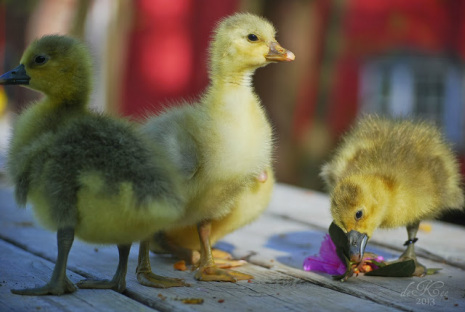
This goose is listed as critical by the American Livestock Conservancy. There is an urgent need for more conservation breeders of Pilgrims.
All birds sold for pick up here on the farm, minimum purchase 2 goslings.
Unrelated breeding pairs available in Sept/Oct.
All birds sold for pick up here on the farm, minimum purchase 2 goslings.
Unrelated breeding pairs available in Sept/Oct.
Heritage Narragansett Poults $20 ea.

Hatching every 2 weeks from May - August
Juveniles: $65
Adults: $75
SOLD OUT FOR 2024
Narragansett turkeys have a calm disposition, are good mothers, have excellent egg production, and excellent meat quality. The Narragansett turkey would make a useful and beautiful addition to the family farm. We focus on careful selection for good health, ability to mate naturally, and production attributes for superior birds.
The Narragansett turkey is named for Narragansett Bay in Rhode Island, where the variety was developed and descends from turkeys brought to America by English colonists in the 1600’s. Improved and standardized for production qualities, the Narragansett became the foundation of the turkey industry in New England until the Broad Breasted White was introduced and became what is now known as the "Butterball".

For your table, a heritage turkey is the perfect choice for a truly traditional holiday:
These original Narragansett don’t get as large as factory farmed birds, but make up for it with heavy breasts, dark, rich meat, and authentic turkey flavor. Hand-processed, these heritage turkeys offer extra crispy skin when roasted for a truly show-stopping centerpiece to your meal. Our young toms weigh between 22-28 pounds and hens 12-16 pounds.
.
Guinea Fowl Assortment $8 ea
Raise Guinea Fowl & Lower the Tick Count!
SOLD OUT FOR 2024
Native to Africa, they are known for traveling in large, gregarious flocks. There are seven types of guinea fowl, "helmeted" is the variety we raise: they have an oddly shaped helmet, white, featherless face, bright red wattles, and gray polka-dotted feathers. Guinea also lay very tasty medium sized brown eggs.
SOLD OUT FOR 2024
Native to Africa, they are known for traveling in large, gregarious flocks. There are seven types of guinea fowl, "helmeted" is the variety we raise: they have an oddly shaped helmet, white, featherless face, bright red wattles, and gray polka-dotted feathers. Guinea also lay very tasty medium sized brown eggs.

Like officious little men in baggy gray suits, guinea fowl are relentless in their pursuit by scouring your pasture for beetles, locusts, spiders, and ticks.
Ask those who keep guineas why they have them and you'll get a different answer every time. Chicken and turkey farmers keep them to ward off poultry-eating predators. Ranchers turn them loose to discourage rattlers and copperheads. Country dwellers like the way they gobble down disease-carrying ticks. Orchardists use them to drive off marauding birds. Farmers put them to work patrolling for row crop pests. Guineas do all this without damaging crops. Sure, they'll take the occasional peck at a cultivated plant, but they much prefer insects, weeds, and seeds.
Free-ranging guineas spend most of their days foraging. They work as a team, marching chest to chest and devouring anything they startle as they move through the grass. When they discover a special treat—a rodent, for example, or a small snake—they close ranks, circle their prey, and move in for the feast. All the while, they keep up a steady stream of whistles, chirps, and clicks, a sort of running commentary on the day's hunt.
Ask those who keep guineas why they have them and you'll get a different answer every time. Chicken and turkey farmers keep them to ward off poultry-eating predators. Ranchers turn them loose to discourage rattlers and copperheads. Country dwellers like the way they gobble down disease-carrying ticks. Orchardists use them to drive off marauding birds. Farmers put them to work patrolling for row crop pests. Guineas do all this without damaging crops. Sure, they'll take the occasional peck at a cultivated plant, but they much prefer insects, weeds, and seeds.
Free-ranging guineas spend most of their days foraging. They work as a team, marching chest to chest and devouring anything they startle as they move through the grass. When they discover a special treat—a rodent, for example, or a small snake—they close ranks, circle their prey, and move in for the feast. All the while, they keep up a steady stream of whistles, chirps, and clicks, a sort of running commentary on the day's hunt.
|
Our Guinea Fowl are sold as an assortment only (as we cannot guarantee which colors will hatch when you're next in the queue) and may include any of the following colors: Pearl Gray, Violet, Lavender, Porcelain, or Pied. Need a silent tick & mosquito control solution? ask about our Muscovy. |
.
Heirloom Broilers: Red King (5 chick minimum order) $3 each
|
Expected Hatch Date: 3/17/21, 4/14/21, & 5/12/21 |
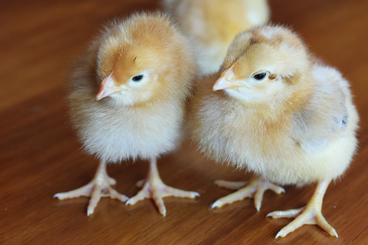
St. Run. No shipping: local pick-up on farm in Accokeek, MD. Payment due via cash or credit at the time of farm pick-up.
If you want a bird that’s super healthy, grows well with excellent feed conversion, and reaches a consistent processed weight of 5.5 - 6 pounds in 12 weeks the Red King is your bird! The average age of your normal commercial bird, a white-feathered Cornish-X broiler, in the U.S. is 42 days and no matter what’s in your feed, a 42 day-old broiler is too young to develop any real taste or texture. Additionally, I like to grow my birds out large to better maximize my time and have the highest meat to bone ratio. I've deconstructed both a 3-pound chicken and a 6-pound chicken and found that both have about 1.5lbs of bone/inedibles. So it makes a lot more sense to grow a larger bird - to a certain point anyway.
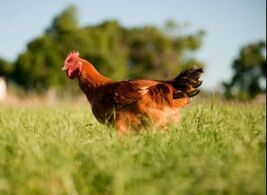
If you're like me, you want a large growing but healthy and sturdy meat chicken with a richer tasting and better textured meat. With the Red King I don’t have the array of health issues that plague the Cornish-cross, such as risk of heart attack, weak legs, temperature sensitivity, and lethargy. When the Cornish-cross lay down all the time it creates a callus on their chest that looks and feels gross when you dress them out.
The Red King broilers are better foragers, act more like real chickens, and don't just hang out at the feeder all day - they're simply a more ethical, slower-growing bird. These active meat chickens enjoy lots of bugs and grasses in addition to the

grain you feed them which means more meat and less feed cost for you. Even though they take a little longer long to grow out, I find that these birds cost me the same amount in feed as the Cornish-X because they actually forage. And unlike Freedom Rangers, you'll get excellent consistency in your dressed weights and much larger breast meat. And if you don't harvest them at a certain age they won't just keel over on you at 10-weeks. As I said, these guys are real chickens!
Red King has good growth rate and feed conversion, excellent livability and a 70% live to dressed weight yield depending on how much fat you pack onto them. The breast meat is on a long keel in natural proportion to the leg meat. This hardy bird is an excellent forager well suited for any environment. Photos don't do them justice... these are a big bird that's perfectly portioned! And at 12-weeks they'll be the best tasting chicken you've ever grown out for meat.
Red King has good growth rate and feed conversion, excellent livability and a 70% live to dressed weight yield depending on how much fat you pack onto them. The breast meat is on a long keel in natural proportion to the leg meat. This hardy bird is an excellent forager well suited for any environment. Photos don't do them justice... these are a big bird that's perfectly portioned! And at 12-weeks they'll be the best tasting chicken you've ever grown out for meat.
.
Broad Breasted White Turkey Poults $12.50 ea. (3 poult minimum order)
|
Expected Hatch Date: 6/16/2022
|

St. Run - No shipping: local pick-up on farm in Accokeek. Payment due via cash or credit at the time of pick-up or you can paypal me ahead of time.
Limited availability: At the reservation page (blue button above) the number you see in the "remaining" column is the number remaining for pre-order. You must reserve a minimum of 3 poults - and you must purchase all you reserve. St. Run Only.
Have you ever wondered what it would be like to raise your own turkeys for Thanksgiving? Perhaps you’d prefer to monitor exactly the organic feed your flock consumes. And maybe you just want to test the waters for becoming self-sufficient by raising most of your family’s food? Poultry is an easy start for that adventure and turkeys are very gentle birds for your family to raise – they’re perfect for kids. Raise one for Thanksgiving and two for the freezer! Pound for pound, turkeys are less work for more meat than harvesting other poultry.
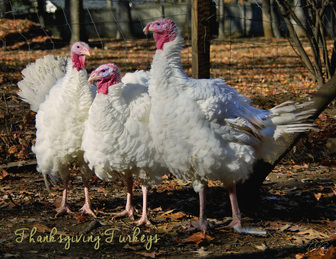
These are tender, juicy, and delicious meat birds and it’s why they’re called the “Cadillac” of table turkeys. Highly disease resistant, excellent feed conversion, and a very ethical grower - there’s no better meat turkey anywhere. White feathers give the birds a neat appearance when dressed. Properly managed, I can guarantee that this will be the juiciest and most flavorful turkey you've ever eaten!
Most folks start their Thanksgiving turkeys in the middle of summer and I’m no exception, I like to grow my toms big. Your hens will be a bit smaller, so depending on the size of the crowd you host for Thanksgiving you’ll likely want to harvest the girls around 20 lbs for the table then cut up and freeze the larger Toms for regular family dinners throughout the year.
Most folks start their Thanksgiving turkeys in the middle of summer and I’m no exception, I like to grow my toms big. Your hens will be a bit smaller, so depending on the size of the crowd you host for Thanksgiving you’ll likely want to harvest the girls around 20 lbs for the table then cut up and freeze the larger Toms for regular family dinners throughout the year.
|
I start turkeys on high quality Turkey starter but any game bird feed at 24%-28% protein will work fine for the first month, then change over to meat producer feed at about 18% – 20% protein and enough nutrition to reach a nice harvest weight. Provide pasture for foraging or other good greens, pasture will really reduce the feed bill! In the last month I mix in 1/3 turkey starter, 1/3 cracked corn or millet, and 1/3 molasses sweet feed to make for an amazing tasting bird that's very moist and meaty. Poults are very fragile and prone to piling on top of one another if they get cold, so special care must be taken in the first few weeks. Then, when they're well started, giving them space to roam and roost while they grow out is the key to hardy, healthy birds. I've successfully raised beautiful, healthy small groups (8-10) side-by-side with my chickens, ensuring the turks had nice, sturdy roosts overnight. |
.
Narragansett Turkey Hens - $75 ea
|
|
Narragansett turkeys have a calm disposition, are good mothers, have excellent egg production, and excellent meat quality. The Narragansett turkey would make a useful and beautiful addition to the family farm. We focus on careful selection for good health, ability to mate naturally, and production attributes for superior birds. The Narragansett turkey is named for Narragansett Bay in Rhode Island, where the variety was developed and descends from turkeys brought to America by English colonists in the 1600’s. Improved and standardized for production qualities, the Narragansett became the foundation of the turkey industry in New England until the Broad Breasted White was introduced and became what is now known as the "Butterball". |
Adult Indian Runner Hens - $45 ea
|

White, Chocolate, and Penciled available
Limited amount of drakes available for breeding pairs & trios
Foundation stock from Apricot Valley Waterfowl Preservation, Ontario, Canada.
Silly clown ducks with funny little personalities. Raised primarily as ornamentals, they're also good layers. Runners are only second to Dutch Hookbills as the hands-down best foragers of all domestic ducks; they'll keep a garden clear of slugs for sure! Rather high strung, they don't have much desire to brood their own eggs but they'll most certainly produce tons of offspring if you 're able to find an alternative way to hatch the eggs.
Very good layers of about 220 white or blue eggs averaging 2.8 oz each.
The Indian Runner is listed in a "watch" status by the American Livestock Breeds Conservancy. Learn more about the Indian Runner breed here.
Limited amount of drakes available for breeding pairs & trios
Foundation stock from Apricot Valley Waterfowl Preservation, Ontario, Canada.
Silly clown ducks with funny little personalities. Raised primarily as ornamentals, they're also good layers. Runners are only second to Dutch Hookbills as the hands-down best foragers of all domestic ducks; they'll keep a garden clear of slugs for sure! Rather high strung, they don't have much desire to brood their own eggs but they'll most certainly produce tons of offspring if you 're able to find an alternative way to hatch the eggs.
Very good layers of about 220 white or blue eggs averaging 2.8 oz each.
The Indian Runner is listed in a "watch" status by the American Livestock Breeds Conservancy. Learn more about the Indian Runner breed here.
Adult Dutch Hookbill Breeding Trios - $110
|
|
White available.
Foundation stock from Apricot Valley Waterfowl Preservation, Ontario Canada Originating in Holland, the beautiful and rare old Dutch Hookbill duck had a close encounter with extinction in the mid-1900s. According to references, the Hookbill has been traced back as early as 1676. At one time, larger numbers were raised for their eggs and meat in the Netherlands - where they were allowed to forage in and along the canals. Tradition holds that the distinctive bill shape and white bib were selected to make it possible for hunters to distinguish them easily from wild ducks. A calm, curious, and jovial breed to raise that is easily tamed. As adults, they're apt to follow you around the yard nibbling on your shoes or get right in the middle of you spreading new straw in their bed. Dutch Hookbills are one of the best – if not *the* best - foragers of all domestic ducks, and excellent layers of about 220 white or |
blue eggs averaging 2.6 oz each. Drakes are very good with their girls, I've never seen overbreeding at any age and the boys like to take their ladies on small adventures while keeping a close eye on them as they forage. Some of my most observant drakes, they round up their gals at the first whiff of danger.
A really enjoyable breed of duck to raise in any environment!
A really enjoyable breed of duck to raise in any environment!
Adult Black Cayuga Breeding Pairs - $60/pair
|
|
Foundation stock is from Holderread Waterfowl Preservation Top Show Quality line. The Cayuga is a medium-class, very robust breed that is known for it's beautiful black plumage that shines iridescent green in the sun and reflects back purple in the shade. They have a jet black bill with occasional olive tips and the feet and legs are solid black (never orange). Weighing an average 8 pounds for mature males and 7 pounds for females, this is a nice sized waddler with a deep, grunting quack. Additionally, the eggs start the season black as coal with a deep green shell. As the season runs on, the "paint bucket" runs out of black and you have a beautiful, extra large, dusky green egg. The Cayuga is a good seasonal layer, producing 100-150 eggs January thru November. |
The breed started out as a commercial roasting bird but lost favor in the market when the Pekin took over. The meat of the Cayuga is of excellent taste and fine quality, but its black pin feathers on white skin don't leave as clean a carcass as white feathered birds. Though it's harder to process than light feathered ducks, the meat is high quality with an intense beefy flavor. The breast is a bit smaller than many standard meat ducks but it has a succulent deep red meat with a wonderful complex flavor. I'll fight you for the thighs though!
The Cayuga duck is listed as “Threatened” on the American Livestock Breeds Conservancy’s Conservation Priority List. Learn more about the Cayuga breed here
The Cayuga duck is listed as “Threatened” on the American Livestock Breeds Conservancy’s Conservation Priority List. Learn more about the Cayuga breed here
Adult Ancona Hens - $30 ea
|
|
Foundation stock sourced from a variety of high quality U.S. breeders. Unique, beautiful, and calm tempered, Ancona are a wonderful dual purpose breed that forages better and has superior laying ability to many other dual-purpose breeds. The Ancona is a hardy and adaptable duck well suited for rugged or heavily wooded property. With their individual color patterns, friendly personalities, and laid-back social hierarchy, they are a great addition to any farm. Excellent year-round layers of about 260 white or blue eggs averaging 2.8 oz each. Each of my breeding pens has a drake that carries the blue or green egg gene and several females laying colored eggs. DRAKES AVAILABLE TO CREATE BREEDING PAIRS & TRIOS. The Ancona is listed in a "critical" status by the American Livestock Breeds Conservancy. Learn more about the Ancona breed here. |
.
PolyPay Ram Lambs $100 ea.
|
PolyPay Mutton $300 ea.

SOLD OUT
Grow your own organic lamb for the freezer! Lambs are getting big and ready for your pasture! Humanely raised on pasture they remain free of antibiotics, herbicides, or pesticides and are augmented with locally milled non-GMO & Soy-free grains. depending on your preference for weight and flavor they really only need a couple more months to grow out on your pasture.
These lambs are raised naturally on their mother's milk while out to pasture where they graze through fields of grasses and clover. Our sheep are Poly-pay, a wonderful multi-purpose breed known for their exceptional flavor profile and "non-gamey" taste.
Grassfed Lamb is one of the healthiest sources of red animal protein - packed with iron and of a significantly higher heart healthy omega-3 fatty acid than its beef counterpart. Tender, moist, and fantastic to prepare on the grill, in the oven, in the crockpot, or wherever your culinary imagination takes you!
If you're looking for 3+ year old ewes (who have already lambed) we have those also, we just need to give them a haircut and a pedicure to get the summer season off to a good start for them. The meat is a darker red than that of most lamb you see on the market. But it is also well marbled with a mild, yet distinctive flavor.
.
French Toulouse Goose - $75

Sold! This pretty girl is keeping a lonely Toulouse gander company.
We now breed only Pilgrim Geese which are auto-sexing!
Hatched: April 2013
Point of Lay: January/February 2014
A beautiful Grey Toulouse Goose is now available. She's due to start her first laying at any time. Take home the Embden Gander with this pretty girl and you have the perfect mating for producing a fast-growing meat-hybrid offspring with excellent flavor and texture.
Ms. Hughes was hatched last spring and was hand-reared on the farm to be sweet and friendly. She's not the least bit aggressive to humans or other fowl but but she's appropriately standoff-ish as female geese should be. She's very curious, well mannered and responds positively to a female voice right now and it shouldn't be difficult to train them to come toward a friendly male voice fairly quickly.
Very engaging, and fascinating pets, geese are a long term relationship. They have quite a lifespan and can give you loyal companionship for 20+ years. If you chat with them, they'll chat with you. They also have long memories and your friendship will benefit greatly from a good balance of letting them know that you're the head goose and treating them with kindness... oh and lots of fun snacks like greens and watermelon. While not a pet-able pet, they're extremely intelligent (smarter than most dogs) and love to learn your routine. They may appear imperious at times but I view it more as a mutual respect for one another's intelligence - and that they're always keeping one eyeball on you as a wily human. An extremely enjoyable animal to raise.
We now breed only Pilgrim Geese which are auto-sexing!
Hatched: April 2013
Point of Lay: January/February 2014
A beautiful Grey Toulouse Goose is now available. She's due to start her first laying at any time. Take home the Embden Gander with this pretty girl and you have the perfect mating for producing a fast-growing meat-hybrid offspring with excellent flavor and texture.
Ms. Hughes was hatched last spring and was hand-reared on the farm to be sweet and friendly. She's not the least bit aggressive to humans or other fowl but but she's appropriately standoff-ish as female geese should be. She's very curious, well mannered and responds positively to a female voice right now and it shouldn't be difficult to train them to come toward a friendly male voice fairly quickly.
Very engaging, and fascinating pets, geese are a long term relationship. They have quite a lifespan and can give you loyal companionship for 20+ years. If you chat with them, they'll chat with you. They also have long memories and your friendship will benefit greatly from a good balance of letting them know that you're the head goose and treating them with kindness... oh and lots of fun snacks like greens and watermelon. While not a pet-able pet, they're extremely intelligent (smarter than most dogs) and love to learn your routine. They may appear imperious at times but I view it more as a mutual respect for one another's intelligence - and that they're always keeping one eyeball on you as a wily human. An extremely enjoyable animal to raise.
.
White French Production Muscovy Trio (1 drake & 2 ducks) - $50

SOLD!
Second season White French Production Muscovy Trio (drake is one year older) for sale. The boy is a sweetheart and the girls are friendly little homebodies. This strain is very calm and not aggressive and you'll have babies this season!
This is a French improved breeding stock that produces birds 50% larger than our American Muscovy. Very quiet and calm, lay lots of nice big eggs Feb-Nov (then tend to go broody for winter), excellent foragers. Wonderful personalities for pets: boys are super sweethearts, big flirts when you call their name; girls are amazingly docile... also the best broodies & mamas! These ladies regularly hatch out 12-18 babies at a time (35 day incubation). For meat production, drakes usually attain a live weight of 12 pounds in 12 weeks. My typical dressed weights: Hens 3.5- 4.5 lb. and drakes 8 - 10 lb. (most dress at 9 lbs). High in meat-to-bone ratio, with less weight loss after cooking than Pekin ducks.
Second season White French Production Muscovy Trio (drake is one year older) for sale. The boy is a sweetheart and the girls are friendly little homebodies. This strain is very calm and not aggressive and you'll have babies this season!
This is a French improved breeding stock that produces birds 50% larger than our American Muscovy. Very quiet and calm, lay lots of nice big eggs Feb-Nov (then tend to go broody for winter), excellent foragers. Wonderful personalities for pets: boys are super sweethearts, big flirts when you call their name; girls are amazingly docile... also the best broodies & mamas! These ladies regularly hatch out 12-18 babies at a time (35 day incubation). For meat production, drakes usually attain a live weight of 12 pounds in 12 weeks. My typical dressed weights: Hens 3.5- 4.5 lb. and drakes 8 - 10 lb. (most dress at 9 lbs). High in meat-to-bone ratio, with less weight loss after cooking than Pekin ducks.
.
Naked Neck Pixi Chickens - 3 pullets for $30
|
Sold!
Hatch Date: 8/2014 Rooster and pullet pictured here. These adorable little Naked Neck Turken chickens have amazingly friendly little personalities. They're perfect for children or for replacing that teacup chihuahua in your Paris Hilton handbag. They're very easy to handle and I find that they have no trouble taking care of themselves among my flock, they're not bossy but they do get their way! These ladies are curious and love to follow their humans all around making cute little chortling noises. These tiny but hardy birds are what's known as "bow tie" because they have a little ascot-like fluff of feathers on their necks that drapes down to cover the skin on their chest, which is also featherless. |

The exposed skin on their necks turns bright red in the sun, but when not exposed to the sun, it remains pinkish.
Also called "Transylvania Naked Necks" because the mutation for a featherless neck first arose in domestic chickens in northern Romania hundreds of years ago. Naked Neck Chickens have about 40% less feathers than other breeds and are very feed efficient. With less feathers, there is less need for protein to grow and maintain feathers. This means that the protein being consumed is put toward production of more eggs. Studies have shown that Naked-necks tend to be immune to many poultry diseases and that bare-necked birds are more resistant to heat... though I find mine to be very winter hardy in our region as well.
Also called "Transylvania Naked Necks" because the mutation for a featherless neck first arose in domestic chickens in northern Romania hundreds of years ago. Naked Neck Chickens have about 40% less feathers than other breeds and are very feed efficient. With less feathers, there is less need for protein to grow and maintain feathers. This means that the protein being consumed is put toward production of more eggs. Studies have shown that Naked-necks tend to be immune to many poultry diseases and that bare-necked birds are more resistant to heat... though I find mine to be very winter hardy in our region as well.
.
Saffron Queen Production Layer Ducks $20 ea. (3 avail)
SOLD! These sweetheart layers are free-ranging at Moon Valley Farm in Cockeysville
We have replaced this breed with the Golden Cascade which is even better!
Hatched: April 15, 2013
Point of lay: September 2013
3 available
Developed for commercial egg producers, the Saffron Queen is a hybrid duck which lays more eggs (and larger eggs) than the Khaki Campbell duck which is one of best all-around heritage layer duck breeds. While Campbells can be excitable and a little on the noisy side, these ladies have a nice, calm temperament and a friendly personality - very sweet and playful girls. As adults the females range in color from a nice deep honey color to a darker nutmeg shade, often with a white necklace, and bills of varying colors.
These girls are sweet and friendly with lots of energy for foraging. They lay huge eggs and plenty of them, they're such reliable hens. They lay all winter when most of the layers are slacking off a bit and also provide me with lots of table eggs in the spring and summer while all my pure breeds are making me babies.
.
We have replaced this breed with the Golden Cascade which is even better!
Hatched: April 15, 2013
Point of lay: September 2013
3 available
Developed for commercial egg producers, the Saffron Queen is a hybrid duck which lays more eggs (and larger eggs) than the Khaki Campbell duck which is one of best all-around heritage layer duck breeds. While Campbells can be excitable and a little on the noisy side, these ladies have a nice, calm temperament and a friendly personality - very sweet and playful girls. As adults the females range in color from a nice deep honey color to a darker nutmeg shade, often with a white necklace, and bills of varying colors.
These girls are sweet and friendly with lots of energy for foraging. They lay huge eggs and plenty of them, they're such reliable hens. They lay all winter when most of the layers are slacking off a bit and also provide me with lots of table eggs in the spring and summer while all my pure breeds are making me babies.
.
.
Blue Swedish Ducks $20 ea. (3 available)
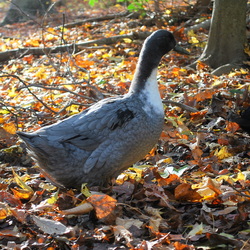
SOLD! These fat and friendly ladies are happily ranging with Kunekune pigs at Black Valley Farm!
We have replaced this breed with Ancona's which are friendly & even more unique!
Point of Lay: July 2013
These girls are new layers and have been laying me a nice big egg each every day.
The Swedish is a medium sized bird that weighs about 6 lbs with a stocky body. The feathers on these girls is a pretty uniform bluish slate with a clear white bib. They'll lay about 200 primarily white eggs every year with an occasional blue or gray tinted egg. Swedish are very calm and friendly ducks, these girls are not skittish at all. They're very active foragers and will keep your yard clear of bugs.
P. Allen Smith did a nice piece on his program about them: You Tube
The Swedish duck is listed as “Watch” on the American Livestock Breeds Conservancy’s Conservation Priority List.
We have replaced this breed with Ancona's which are friendly & even more unique!
Point of Lay: July 2013
These girls are new layers and have been laying me a nice big egg each every day.
The Swedish is a medium sized bird that weighs about 6 lbs with a stocky body. The feathers on these girls is a pretty uniform bluish slate with a clear white bib. They'll lay about 200 primarily white eggs every year with an occasional blue or gray tinted egg. Swedish are very calm and friendly ducks, these girls are not skittish at all. They're very active foragers and will keep your yard clear of bugs.
P. Allen Smith did a nice piece on his program about them: You Tube
The Swedish duck is listed as “Watch” on the American Livestock Breeds Conservancy’s Conservation Priority List.
.
Juvenile Guinea Fowl (5 Avail) $9 ea.
SOLD! These busy birds are now happily working as the perfect organic tick preventative and as a sustainable meat source for our goood friends at Moss Farms.
Hatch Date: June 2013
Point Of Lay: December 2013
Raise Guinea Fowl and Lower the Tick Count
Plagued by Japanese beetles? Noticing an abundance of ticks on your property? Stink bugs terrorizing your garden? If you want a highly effective, chemical free solution then keeping a few guinea fowl grazing on your property is the answer. These interesting birds will keep your property clean of insect pests and even kill snakes!
Have a small property and/or need a silent tick & mosquito control solution? ask about our Muscovy.
Sold as straight run; minimum purchase 3 guineas.
Hatch Date: June 2013
Point Of Lay: December 2013
Raise Guinea Fowl and Lower the Tick Count
Plagued by Japanese beetles? Noticing an abundance of ticks on your property? Stink bugs terrorizing your garden? If you want a highly effective, chemical free solution then keeping a few guinea fowl grazing on your property is the answer. These interesting birds will keep your property clean of insect pests and even kill snakes!
Have a small property and/or need a silent tick & mosquito control solution? ask about our Muscovy.
Sold as straight run; minimum purchase 3 guineas.



